When Simon Nazarian joined City of Hope in September 2024, he saw an organization that was doing extraordinary work in caring for patients with cancer and diabetes. He also saw an opportunity to leverage emerging technologies to advance the digital ecosystem and propel City of Hope to the next level.
In his first year as Chief Digital and Technology Officer, that’s precisely what his team has done.
“Some of the world’s greatest research happens here,” Nazarian said during an interview with This Week Health. “Our goal, first and foremost, is to redefine and accelerate that research, which helps us improve care delivery and provide tools to the marketplace that folks are excited to adopt and utilize.”
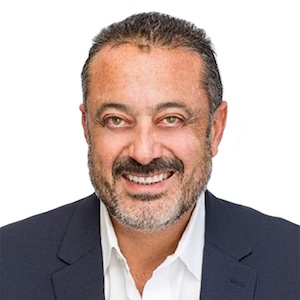
Simon Nazarian
One of those tools is HopeLLM, a generative AI platform that combines multiple commercial and open-source models to assist physicians in summarizing patients’ medical histories, matching them with clinical trials, and extracting data for research. Through the platform, which was engineered and validated in-house, City of Hope is able to drive “more focused, personalized patient care,” while also easing the administrative burden on providers.
It’s a prime example of the leading-edge thinking that he believes will continue to solidify City of Hope’s reputation as a leader in the space. “Our bench to bedside is what distinguishes us,” Nazarian noted. “We have the ability to move quickly and fill gaps with innovation.”
What has made that possible is a concerted effort to “modernize the technology core and make sure we have a resilient foundation to fuel and enable our growth,” which started long before he arrived at City of Hope. “That’s really important.” Not only can it lead to cost and risk avoidance down the road, but having a solid base can position IT teams to be able to “take advantage of all the capabilities out there,” he said. “It’s about harnessing AI, automation, and digital workflows to empower the business and elevate patient care.”
Case in point? HopeLLM, which has created a clinical trials database that’s “streamlined for patient enrollment,” Nazarian noted. The “groundbreaking” model “accelerates research timelines and ensures that patients across the US have access to top-tier cancer treatment without needing to travel far.”
They aren’t stopping there, he said, adding that City of Hope plans to expand the database to grant even more patients access to lifesaving cellular therapies and other biomedical discoveries, including the well-renowned bone marrow transplant program.
And while the response from patients and families has certainly been encouraging, the true boon has been the buy-in from physicians, who have stopped his team in the hallways to thank them for “thousands of hours saved on chart summarization alone,” Nazarian added. Because City of Hope is a referral organization, patients can come with 10,000 or even 20,000 pages of medical history.
With HopeLLM, “we’re able to pull all of that together so that doctors can access it ahead of time, navigate it, and use natural language processing to interact with that information at the point of care.”
Enabling this, however, required more than just the technology piece, he said, noting that change management – and particularly the education aspect – was a key focus. “We’ve made it a practice here to make sure the right training is taking place.”
The first step is getting clinicians involved early and seeking feedback. “You want to understand what exactly they want,” Nazarian said, advising leaders to “pay attention to net promoter scores and be agile so that you can iteratively continue to improve the product.”
The next is to be deliberate in how solutions are deployed, ensuring that each round of users is truly ready. “Oftentimes when they see their colleagues using something, they ask, ‘when are you rolling it out to us?’ But we need to make sure it doesn’t become shelfware.”
Finally, he urged colleagues to listen, especially when it comes to developing ideas or piloting solutions. “It’s one of our core values,” Nazarian noted. “We’ve learned that by listening, we’re able to uncover where innovation is really needed.”
The best source? Frontline staff. “They’re the ones who are doing the work. They can tell us what to innovate and where so that they can do things better, faster, cheaper at the point of care,” he said. Those who are closest to the patient can also provide key insights to improve diagnosis and early detection based on emerging patterns.
In fact, his team has a backlog of use cases for solutions – not just those that leverage AI and machine learning, but also traditional technologies. “Because we have an agile framework, we’re able to meet those demands. We’re not doing anything earth-shattering,” he continued. “We’re applying classic change management practices in a world of emerging technologies.”
As a result, City of Hope is able to help patients and caregivers more effectively navigate the care journey, through the life cycle of the disease and beyond.
“We want to continue to be part of their lives,” Nazarian said. “This gives us the opportunity to do that.”
In recent years, medical associations have thoroughly investigated the user experience for physicians, distributing surveys in hopes of identifying the most significant challenges. And while that data has helped illuminate issues on a broad level, it hasn’t necessarily provided the organization-specific details sought by leaders like James Blum, MD, Chief Health Information Officer at University of Iowa Health Care.
And so, Blum’s team conducted their own survey in 2023 and found that the number one pain point was external data integration – not surprising given that UI Health Care provides most of the tertiary and quaternary care for the state of Iowa, and serves as a referral center for specialized care. What that means, he noted, is “we get a lot of patients that we don’t know very well.”
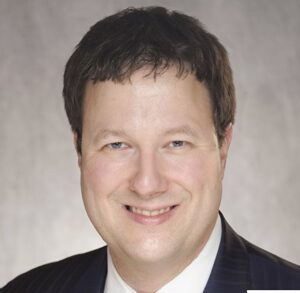
James Blum, MD
To that end, they’ve been focused on finding ways to seamlessly integrate patient data into the system and present it to clinicians at the point of care, while also working to reduce the administrative burden. Recently, Blum spoke with This Week Health about the strategy his team is leveraging to “move the needle,” which involves not just deploying the right tools, but also providing the right structure and education to drive adoption.
UI Health Care’s first major step in that direction was implementing an ambient AI-documentation tool that was shown to reduce burnout significantly during a trial. “We recognized that the human was going to be out of the loop at some point – that this was the future,” he noted. “We were ready; we had a trial group aligned and we knew how we would do the bake-off.”
What they also had was a strict set of compliance requirements and a high level of expectations, which added a layer to the selection process. “We instantaneously recognized that almost no vendor at the time was going to meet our criteria,” Blum said, particularly when it came to data usage. Despite assurances that data would be de-identified, his team stood their ground, and eventually signed an agreement with Nabla. “They told us they didn’t need our data, and so, we were off to the races.”
Following the trial, the tool was deployed to physicians, non-physician providers, nursing, house staff, and trainees, garnering high adoption rates and validating the team’s decision to act quickly. “This was a case where perfection can be the enemy of good; we didn’t want that,” he added. “We went with good, and it’s been much better than that.”
Another big change they stared down was data integration – or more accurately, the lack thereof. “We still get a lot of information via fax,” which makes it “very difficult to put together a picture of patients,” he noted, and particularly those undergoing specialty surgery. “We need to make sure the patient can withstand the anesthetic and the recovery,” and that the right support services are in place.
The solution they chose? Evidently, a clinical data intelligence platform that, put simply, “takes all of the data in the EHR and converts it to information that is then usable for clinicians, and hopefully brings wisdom to the picture,” Blum said. The tool combs through the patient’s record and generates an automated problem list and summary of the last 24 hours, as well as the last clinical encounter with University of Iowa Health Care. In doing so, it helps save time, while also guiding the decision-making process.
Additionally, Evidently introduced a set of generative AI tools to help clinicians recognize comorbidities and document any steps that are taken. As a result, “it has helped us become more robust and has changed the way we practice,” said Blum.
That, he believes, should be the bar when it comes to any initiative – particularly one that introduces change.
For that reason, they’ve adopted a “very scientific approach to implementation” that establishes the right set of metrics. “If it can withstand peer review in a publication, it can withstand your CFO,” he noted. “That tends to be our approach, along with making sure we know the expected and desired outcomes prior to any intervention.”
From there, he provided a few more nuggets of wisdom for organizations that are considering AI-driven technologies.
“We’ve been successful with both of these technologies,” Blum said, noting that as many as 80 percent of providers have created accounts for at least one of two, and about 60 percent are using them regularly. The determining factors? “Making it available and making it simple,” he noted, and not forcing it on anyone.
“We made a commitment to this, and I think it’s going to be a huge win. I think ultimately, we’re going to get to the point where doctors can, once again, just be doctors,” he noted. “They can go in and talk to the patient without having to write a comprehensive note. It’ll be written for them and they’ll have information presented in a sensible fashion.”
And that, in time, will help “bring back the joy of medicine.”
Of all the “revolutions” to hit healthcare in recent years, the one Ashis Barad finds most intriguing is the rise of advanced analytics. “I’m more excited about that than I was for the EMR and virtual health revolutions,” he said
But it’s not just the technology itself – it’s the promise it holds for users. In fact, “I think the future of AI is in agency. Giving people the agency to build their own AI tools, but do it within a safe enterprise platform with connected data.”
As the inaugural Chief Digital and Technology Officer at Hospital for Special Surgery – a role he took on last year – he hopes to create an environment that fosters that spirit. One in which “our operators or schedulers can sit with an engineer and build real-time agents that actually solve their problems they’re closest to,” Barad noted. The revolution his team envisions involves a proactive approach to AI that harnesses its power to improve processes.
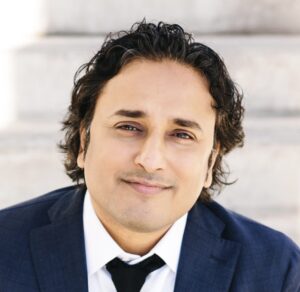
Ashis Barad, MD
All of this, of course, isn’t possible without a solid infrastructure; at HSS, that comes in the form of a five-pillar strategy for digital transformation.
During the interview with This Week Health, Barad outlined his team’s blueprint, providing insights on how they’re creating a setting in which people can play with AI, the problem with relying on traditional ROI, and why it’s critical to focus on platforms rather than solutions.
The two most important pillars are the ones that serve as the foundation. First, fostering a culture of discovery, and second, data management.
”I’m absolutely adamant that technology – and especially agentic AI and reasoning and everything that’s coming into our world – is only as good as the people who are using it,” he said. And until recently, that use was happening more on an individual level than an enterprise level.
The difference maker has been seen in the work HSS and other organizations are doing to centralize data and create data lakehouse architectures. Through a partnership with Databricks, they’re migrating data to a platform to enable users to “make more informed decisions with business intelligence and forecasting,” and set the stage for “true big data where we can put in machine learning models in AI to start moving fast.”
Before that happened, however, they had to move slowly. “We’ve spent a lot of time on the foundational elements, which was purposeful,” Barad stated. “When you give people data, they can make informed decisions to take action. But there's a lot of work happening underneath all of that.”
And that work opens the door to the next set of pillars, starting with what they’ve termed scaled trusted care. For HSS, which has established itself as a leader in the musculoskeletal health space, being able to extend the brand and serve more patients is certainly a goal, but it has to be approached carefully.
“We believe there's a world in which we're going to get out of the conundrum of one-to-one care and become one to many,” Barad said. To this point, however, digital and virtual care models have focused more on scale than trust, which isn’t going to cut it.
“People care about who they see and where the information is coming from,” particularly when scheduling orthopedic procedures. “They don’t want generic care. They want expertise.”
And they want that care to come from humans. To accommodate that, HSS is leveraging AI to manage data-intensive tasks, freeing up bandwidth for providers to interact with patients. “We’re constantly looking to innovate and redefine the musculoskeletal space,” he said. By leaning heavily into augmentation, they’re also enabling surgeons and doctors to “spend more time on research and innovation,” which in turn can boost satisfaction. “It’s not just about automation; it’s about humanizing care.”
The final pillar is around reimagining consumer centric care. One path is utilizing AI to ensure that patients – not just providers – can readily access medical records, labs, imaging, and other pertinent information, which in turn helps empower them.
“Given the advances we’ve seen, there’s no reason why we can’t be with people as they’re going through their journey and provide a personalized experience,” he noted. “We need to get from ‘ouch’ to outcome faster.”
And do it in a way that aligns with the organization’s strategic objectives, which means viewing the many initiatives and projects that exist within the pillars in a holistic way. “We need to create interconnections between them so that we’re not doing 1,000 new things,” but rather, looking at how AI and data can collectively drive those initiatives.
What often hinders that, however, is the tendency many leaders have (and understandably so) to place too much emphasis on ROI. “My fear in the world of AI is that if we hyper-focus on ROI it won’t scale because there’s so much fear of automation reducing jobs,” Barad said. “People aren’t going to lean in and build an agent if they’re worried it will take the job. That’s not the goal, nor should it be. We don’t have to think through that lens.”
Instead, leaders should seek to cultivate a setting in which people can experiment with AI capabilities. “You need to let them use it, touch it, feel it, and get comfortable with it. That’s the first step – creating an environment where people want to play with AI.”
The ultimate goal is a scenario in which those who are closest to the problems can sit with an engineer and build agents in real-time to alleviate those issues. “It’s a partnership where the tech team knows what it can do and is willing to challenge the front lines and say, ‘have you thought about it this way?’ And ‘do you know that technology can actually take away those eight steps?’ That’s a true partnership. Having the platforms by which people can have those conversations is going to be gold.”
In the nearly three years since ChatGPT was introduced, artificial intelligence (AI) has been touted as transformative, revolutionary, and innovative – and understandably so.
GenAI has been shown to increase efficiency, reduce burnout, and improve patient experience by automating routine tasks and facilitating data entry.
One thing it’s not? Magic, according to Deepti Pandita, MD, CMIO and VP of Clinical Informatics, UCI Health. “AI is math, not magic,” she said during a recent interview. “The math has existed for decades.” What has changed is the way it’s being leveraged.
“People have so many different conceptual thought processes when it comes to AI,” she noted. And while it has shown significant potential in easing the administrative burden, the clinical world is a different animal. “That’s where I have some concerns. And it’s where governance and strategy comes into play.”
A big part of that strategy is providing the right education for users. During the interview, Pandita talked about the approach her team has adopted at UCI Health, their development work in LLMs, and how AI can serve as a uniter.
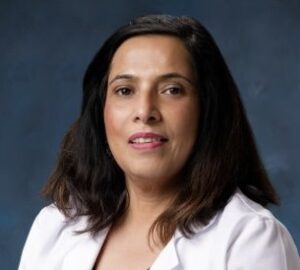
Deepti Pandita, MD
Many of the concerns that Pandita – and other leaders – harbor are rooted in the dramatic changes that algorithms have endured in the recent years. “Twenty years ago, people were doing their due diligence,” she said. “There was a process that you would run in the background for a period of time, and then turn it on and do a side-by-side comparison. You would do outcome analysis, look at papers published.”
The AI race, however, has changed all of that. And as the technology continues to evolve at a rapid rate, it’s becoming increasingly difficult to ensure users understand the importance of transparency and guardrails around data, along with how algorithms are being developed. “Educating the clinical workforce is the biggest challenge we have,” Pandita said.
To that end, her team has developed a multifaceted approach that starts with an AI readiness assessment. Tailored specifically toward the audience – whether that’s healthcare workers, faculty or undergrad students – the 60-question survey aims to create a baseline from which learnings are developed. The objective is to “get to the core of AI knowledge” by asking questions such as, ‘do you understand the difference between a query and a prompt?’
What they’ve found is that although residents and medical schools have more experience using AI, “they don’t know the guardrails. They don’t know the governance piece,” she stated. “They may use it very proficiently in their personal lives, but they don’t understand that if it’s being used on patients, it can cause harm down the road.”
That’s where education comes in. And not just the ‘what,’ but the ‘how,’ Pandita stated. “We know that the attention span and time availability for the average clinician is no more than 5 to 10 minutes.”
The solution her team has proposed? A series of microlearnings that are constantly being updated based on new information. “We know that we can’t just deliver information through a learning management system and sign off,” she said. “We have to constantly update the content so that it’s an iterative process.”
And it has to be one that caters to the unique needs of clinicians – something Pandita understands well. “We know that they won’t learn if it’s offered during patient care hours,” she said. She also knows that “if you present it in a didactic manner, they’ll disengage. You have to engage clinicians where they are, when they’re available, and in a manner in which they like to learn.”
They’re even looking at gamification and reward systems, she said.
It’s that innovative spirit that led UCI Health to develop its own LLM agent – which interestingly “wasn’t a huge lift,” according to Pandita. And it addressed a critical need. “We have a very lean team of trainers, and we couldn’t get to people fast enough to provide at-the-elbow support.”
And so, they decided to leverage their “huge repository,” and create an agent embedded in the EMR that enables users to ask questions. “It has branching logic where the bot leads you to a knowledge document,” she said. If it can’t reach a resolution, a live agent gets involved.
That way, “there’s still a human in the loop. But it has taken a huge burden off by not having someone monitor the chat 24-7, and the physicians are getting support in a more timely manner,” she said. “It’s a win-win.”
Another key victory has come in AI’s ability to break down barriers by generating notes in the patient’s preferred language. This way, “they’re more engaged with their care, because we’re able to have a conversation with them or their interpreter, and the note is still in English, which is needed for regulatory purposes,” she added. “From this lens, AI doesn’t have to be a divider. It can be a great uniter.”
And it can lead to better long-term outcomes, which is the ultimate goal with any tool. The add-on benefit is the potential that solutions like ambient listening have already shown in alleviating some of the cognitive load. “It’s always increasing, so if we can make a dent in that and offset one thing from everything else they have to remember, that’s huge.”
Technology is critical, but it’s not what will get a healthcare organization through a storm – or any disastrous event, for that matter. In fact, it is becoming clear that the best way to prepare for, or manage through, an emergency situation is to learn how to survive without technology.
“You have to be ready for the worst-case scenario,” said Will Landry, SVP & CIO, Franciscan Missionaries of Our Lady Health System. “If there’s a massive outage, what are you going to do?”
Leaders are learning that being prepared for a disaster – whether natural or technical in nature – requires hands-on knowledge of how to operate the systems in place and executive backup plans.
“We have to adapt to everything around us because at the end of the day, it’s not just about technology; it’s about protecting patients,” said Pam Austin, CIO, Ballad Health. “Our hospitals are the heartbeat of the community, so it’s our responsibility to make sure that heartbeat never stops.”
Both Austin and Landry have experienced heart-stopping scenarios and have come out with a more firm grasp on how to prepare their teams and organizations. Recently, both leaders shared their stories and offered advice for others on how to weather the storms.
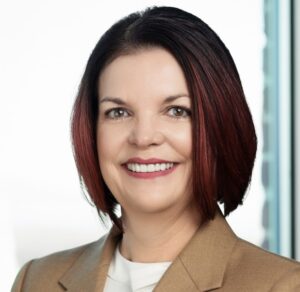
Pam Austin
For a geographically dispersed organization like Ballad, one of the most significant challenges is ensuring patients have access to care, regardless of location. Not surprisingly, the 20-hospital IDN, which provides coverage in multiple states, has “areas that are hard to reach,” according to Austin. “Sometimes the provider is the only lifeline for patients.”
For that reason, her team has made care continuity a core focus, and has established a multifaceted strategy to help prevent and manage disasters.
The ‘people’ component proved particularly pertinent last September, when Unicoi County Hospital, located in Erwin, Tenn., was destroyed by Hurricane Helene. All staff and patients had to be evacuated – several via airlift – due to flooding, and were transferred either to clinics or to the local high school that served as a shelter.
Among the many lessons learned? “Our staff is resilient,” Austin stated. “We can care for patients even outside of the four walls. Another is the value of preparation. “We know now, more than ever, that tabletop exercises are vital. It can be time-consuming, but it’s very clear to use considering what we’ve been through. We know the ‘why.’”
They also now understand that it isn’t just the physical toll that can affect individuals. For leaders, that means “you have to plan for a catastrophe and make sure your teams know what to do, because it is emotional,” she said. “All of a sudden, the infrastructure that’s in place to care for patients is gone, and you have to be ready to stand up care, whether it’s in a high school gym or a tent.
And it needs to be known and understand how that is going to happen. “Here’s how we can keep you connected. Here’s how we can deliver the EMR and all the technology you need to take care of the patient,” she added.
Beyond creating a business continuity plan, it’s ensuring that it is documented and rehearsed, and the community – including clinicians – is prepared. “This is not an IT exercise. It’s an operations exercise that is vital to the people caring for patients,” noted Austin. “At the end of the day, that’s what it’s all about.”
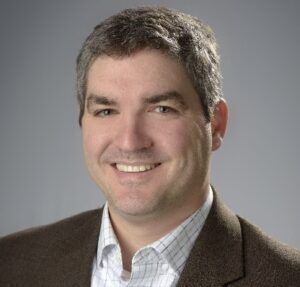
Will Landry
Having spent several years in the Louisiana area – including his tenures with Franciscan Missionaries of Our Lady Health System (FMOL Health), which began in January 2020 – Landry is no stranger to storms.
But when Hurricane Ida ripped through Louisiana in 2021, it introduced a new disaster scenario for his team when its major carrier, AT&T experienced a hard wireless outage. “The local equipment and local exchanges were out,” he recalled. “There was no landline, no fiber – no phones in or out.”
When the emergency abated, his team decided to split corporate cell phone service between two vendors: AT&T and Verizon. “We had some tough conversations and decided that we can’t be totally dependent on one carrier from a wireless perspective.” In fact, they added some T-Mobile devices as well, as their towers are located in different areas.
Another critical move was to establish backup satellite communications, which are tested frequently to ensure providers can contact regional medical centers, trauma centers, helicopters, or emergency services to help transfer patients to other facilities. The move paid off during the storms of 2024, when Franciscan brought in FirstNet and AT&T trucks to enable satellite communications.
Similarly, they host virtual desktop infrastructures to avoid dependence on data centers. “All of our tier zero, one, and two systems are hosted virtually,” he said. That way, “from a critical infrastructure perspective, if we have a physical network failure at one facility, we’re not dependent on a data center based in Baton Rouge, for example. We’re able to burst those desktops in the cloud if needed.”
As many leaders have learned, operating in isolation is never a good idea – particularly in a disaster situation. “From a technology perspective, we’ve recently started having more conversations with our peers in the area,” Landry said, including LCMC Health and Ochsner Health. And while they haven’t yet begun actively coordinating efforts, they’re still taking critical steps by laying the groundwork.
“The most important thing is that we know each other so that if there is an incident or issue, we know what’s happening and can assist, because a lot of our patients cross between these health systems,” he noted. “Five years ago, these conversations weren’t happening. We want to make sure we’re protected, and so, we believe it’s in our best interests to share intel.”
Another event that helped educate his team was the Change Healthcare breach of 2024, which prompted his team to question their procedures. “At the time, we thought, what happens if we can’t do real-time eligibility checking? Who do we call?” And importantly, if systems are offline, how can providers retrieve and document information?
“We’ve had business units come back and say, we’ll just wait for the system to come back online,’ and we’ve said, ‘what if it’s a month? And so, we’ve started talking through those options.”
Even something as simple as placing orders can become difficult during downtime, Landry noted. “We’ve made everything so electronic and easy, but what’s our process to do an order? Those are the things we walk through in our disaster preparation exercises.”
And as someone who has been through countless events, he knows the criticality of being prepared and ensuring teams are educated on what steps to take. “That’s what it’s all about.”
Any career transition can be scary, but when you throw in a physical move, it can be even more daunting. So much so that it can deter leaders from making potentially career-defining decisions, according to Susan Goodson, who turned down many upward opportunities during her tenure at University of Chicago Medicine as relocation was a requirement.
“I was constrained by geography,” she recalled. “When you have kids, friends, a spouse with a demanding career, and aging parents – your whole support system right there, it’s really hard to think about giving that up.”
What’s just as difficult, however, is living with regret. Recently, Goodson – who now serves as SVP and Chief Digital Information Officer at Ann & Robert Lurie Children’s Hospital – spoke with This Week Health about her interesting career journey and offered advice on how she has learned to navigate difficult situations and trust her gut.

Susan Goodson
One of those situations? Learning how to manage and prioritize your family while climbing the leadership ranks. It’s particularly challenging when both partners have demanding jobs, as was the case for Goodson and her husband. “We quickly realized that one of us needed to be more present at home because we wanted to put our fingerprints on our children,” she said. “I love my career and being a working mom, but my most important role is at home.”
Ultimately, she opted for a position that enabled her to remain “intellectually engaged and challenged” while still being “a steady presence” for their daughters.
Looking back, her role at Children’s Hospital Colorado expanded to include more responsibility, with project management, data warehousing and analytics, web development, and business applications falling under her purview. Her husband had an opportunity presented which led to the difficult decision to move to Chicago. Through connections, she found herself a leadership role in the IT department at the University of Chicago Medical Center. Similar to Children’s Colorado she slowly increased her responsibility, continued to deliver, and in time was moved into the Deputy CIO role. Goodson felt she – and her family – were ready to take the additional demands of this role.
As Chief of Staff to the CIO, she led several major initiatives, including ERP selection and implementation. During her tenure, she was exposed to the academic environment, which she believed helped broaden her perspective. “Being around that mindset was a great way for me to get my sea legs and build my leadership skills,” Goodson said.
After 12 years of continuing to hone her skills at UChicago Medicine, she made another change, accepting the role of VP and Associate CIO at Lurie Children’s Hospital. And although it was initially a lateral move, it quickly became a stepping stone, as Goodson was promoted to SVP and Chief Digital Information Officer earlier this year.
Of course, the path that proved successful for one individual won’t always be applicable to all, but there are strategies that can be adopted across the board. Below are some pieces of advice Goodson offered based on her own experience.
Years ago, however, it wouldn’t have been. But with two of her daughters now in college and one in high school, it has freed up some bandwidth to pursue a more time-intensive role.
Being a parent, however, has also affected her career in other ways, Goodson said, noting that “there are a lot of parallels between leadership and parenthood,” especially when it comes to empowering individuals to take ownership. “As my kids got older, I had to learn how to step back and let them figure things out,” she said. “I think that definitely bled into other parts of my life.”
It also helped her develop a greater sense of empathy. “As a young leader, I was perhaps less tolerant of people who had family commitments. Part of maturing as a leader is recognizing that and learning to be more flexible,” which in turn can help cultivate more effective teams.
Her final piece of advice is for individuals to make decisions based on what’s right for themselves and their families, and not based on expectations.
“Timing was really important to me because I had a strong desire to be present with my family,” she said. At the same time, it was critical to be able to continue to make her mark in healthcare. “I stayed in roles that kept me active in the industry, and when my family moved into a different stage, I was ready to hit the gas again.”
And not just at any organization, but one in which she feels “challenged and motivated,” said Goodson, urging colleagues to “make sure you’re making changes for the right reasons.”
Lastly, don’t be afraid to “take the leap. It’s easy to get comfortable at a place where you’ve been for a long time. But I think throwing yourself into a zone where you don’t know everything is how you grow and learn. When I reflect back, I know that’s when I’ve learned the most about myself and grown most as a leader.”
A career transition isn’t something to be taken lightly – particularly when a physical move is involved. Fortunately, taking things lightly isn’t Julie Eastman’s style.
And so, when she was weighing the decision to leave Orange County for an opportunity to take on the CIO role at PeaceHealth, a large health system based in Vancouver, Wash., Eastman admitted to being “overly cautious” during the recruiting process.
“When you’re talking about relocating your loved ones, it puts a little extra pressure on you,” she said. Not to mention the fact that PeaceHealth didn’t have a CIO in place, which meant she would have to jump into the decision-making fray quicker than usual.
Her situation, however, isn’t unusual. And as more leaders contemplate job changes – spurred largely by rising M&A numbers and budget cuts – they’re learning that each instance needs to be navigated individually, and thoughtfully. Recently, Eastman spoke with This Week Health about her recent transition, offering valuable nuggets about how to approach the recruiting and onboarding processes and how she has leveraged her clinical background.
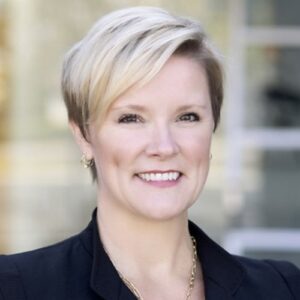
Julie Eastman
As Eastman started to weigh the pros and cons of the opportunity at PeaceHealth, several points stood out, including the faith-based element (which played a significant role) and the organization’s dedication to transformation. The true tipping point, however, was the overall philosophy that “technology underpins everything we do,” she noted.
“When I met with the executives, it was clear that they understand the value not just of technology, but a technology delivery team. That type of language is very different from what I was used to.”
This impression, however, didn’t come from a single conversation, but rather, an entire campaign, during which Eastman leveraged every opportunity to obtain feedback about the organization. “I leveraged my network to learn everything I could,” she stated, including those who were familiar with PeaceHealth, either as employees or consultants. “I went in with eyes wide open.”
Similarly, PeaceHealth was also “a little apprehensive” to fill a role that had been vacant for a significant time period. “They were careful too,” she said. But because priorities had been put on hold, Eastman had to be ready to hit the ground running. “They were really hungry for somebody to come in and make decisions. I had to get up to speed quickly.”
It was a departure from her usual approach of “listening before leading” – a critical component of her onboarding playbook. “Having been through a number of transitions, I tend to focus on making sure I understand what’s working, what’s not working, what’s possible, what’s the culture, and where are the service gaps,” Eastman said. Doing so requires spending time with teams in both group and one-on-one settings to get a feel for how they interact and manage challenges.
And while it’s not ideal to do that in a truncated timeframe, it is possible, she said, noting that adaptability has become an essential aspect of leadership. It’s one she learned firsthand during the 15 years spent in consulting, “where you get dropped into an organization and have to figure things out pretty quickly.”
The other experiences that helped prepare for the CIO role? Her time as both a critical care nurse and clinical services manager, during which she cut her teeth as an implementation specialist. Having that knowledge, she noted, has given her a tremendous edge.
“I speak the language. I understand the impact,” Eastman said. “If you’ve spent time as a critical care nurse, not much will surprise you. You need to be able to think on your feet, and so I think it’s a great foundation for any career.”
For those who eventually move into IT roles, having a background as a nurse or physician can also help gain admittance into exclusive meetings with CMOs, CNOs, and other key leaders – as has been the case for Eastman. “I feel like I’m a very active part of the clinical cabinet. It feeds my soul.”
But while she knows firsthand the implications of changing a workflow or introducing “one more tool to a clinician,” she also realizes the importance of possessing strong technological skills. As such, “I tend to surround myself with technologists. My job is to provide the connection to healthcare operations through my leadership.”
That function is becoming increasingly vital as PeaceHealth approaches an “inflection point in its journey,” according to Eastman. “We’re looking to do a lot of transformation across the system in terms of how we’re structured, and we operate so that we’re continuing to evolve.”
At the foundation of those plans is a “basic technology modernization” that includes pulling more strategic functions in-house and creating a modern operating model. “We’re looking at what’s the future model for IT, and how we can evolve our maturity so it’s not the tail wagging the dog.”
Although she’s only a few months into the new role, Eastman feels her team is on the right track, and feels validated that the work she did prior to day one has paid off. “I went into it so carefully. I had so many great conversations, but the reality is that sometimes you end up in an environment that’s very different” than advertised, she said.
Luckily, that hasn’t been the case. “They were looking for a leader to transform the IT function, and they really have an understanding of how best to do it. It’s about organizational change – that’s the kind of work I love to do.”
For healthcare CIOs and CDIOs, career transitions have become commonplace. Whether it stems from M&A activity – and the resultant corporate restructuring – or a desire for advancement, leaders are increasingly pursuing new roles. Doing so, however, requires “a great amount of energy,” and therefore must be approached thoughtfully and strategically.
“Career transitions need to align with where you are in your personal life,” said Clara Guixa, Chief Digital Information Officer at Baystate Health. “It’s not just about the job itself. Is it the right timing?” And just as important, “How do I leave an impact?”
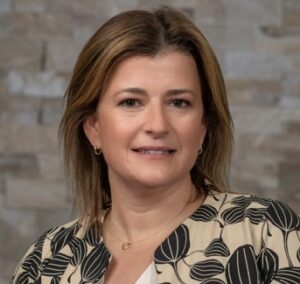
Clara Guixa
Recently, Guixa opened up about how she sought answers to these critical questions before taking on her current role this past June. She also talked about what drew her to the organization, and provided guidance on how to navigate a major transition.
One thing Guixa, a lifelong city resident, didn’t expect was to move to a rural part of Massachusetts. But the opportunity to apply the knowledge gained from her time at Boston Children’s Hospital and UChicago Medicine to improve care access was too good to pass up. At Baystate, “we’re looking at how to drive excellence so that we’re a destination – not only from a quality and clinical outcome perspective, but also from an experience perspective,” she noted.
A significant part of that, she knew, would involve developing a digital framework for the organization, which includes four hospitals and a large multi-specialty group spread out across a wide geographic area.
“We’re going through a lot of transition,” Guixa said. “Not just from a digital or IT perspective, but as a multidisciplinary team putting our heads together to build this membrane across Western Massachusetts.”
Not an easy feat, but one she felt prepared for after investing significant time upfront engaging in listening tours, attending town halls, and conducting interviews with clinical and administrative leaders.
The foundation for building a strong business case, however, started during the recruitment process, where Guixa made it a point to show up prepared. “You need to ask the right questions, and be very thoughtful about how you ask those questions,” she said. Guixa’s key concern? Ensuring she would have “latitude to bring recommendations forward, to elevate the position of IT, and to create a cohesive strategy,” she recalled. “To me, that’s really important.”
Also critical for new leaders? Setting the right tone and getting an accurate read of the organizational culture. For Guixa, the timing of her start couldn’t have been better, as Baystate had just conducted an engagement survey that encouraged – and received – honest feedback. “I was really lucky,” she noted. “From a service delivery standpoint, we’re only as good as the value we provide. We need to be very aligned with our teams and with the business to make sure needs are being met. And for that to happen, we need engaged employees.”
As it turned out, Baystate’s IT team garnered high scores, which Guixa hopes to build upon while addressing the challenges that were identified. “I’m learning a lot.”
And not just about what employees need to successfully do their jobs, but also about what makes them tick. “This is a close community. People tend to come here and build families. There’s a lot of history,” she said, adding that the surveys also shed light on “how people are connected, which is so important.”
Another key lesson Guixa has learned is that how leaders finish their tenures with an organization is just as important as how they start the next role. As she wrapped up her time with Boston Children’s, “it was very important for me to complete a few initiatives that we were working on, and get the team to a point where I felt they could successfully carry the work we had started,” she said.
In her case, that meant giving 30 days notice. “I appreciated the opportunity to do that,” she noted. “It also helped me to start strong.”
There’s an old saying that goes: ‘If you love something, set it free.’
Similarly, if an organization wants an innovation to thrive and make a true impact on healthcare, the same approach must be applied, according to Hank Capps, MD.
“Setting it free helps it to evolve faster,” he said. “The overriding purpose isn’t to create solutions for WellStar. We’re certainly intent on solving problems, but the purpose is to create value beyond that.”
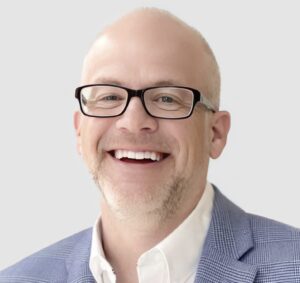
Hank Capps, MD
It’s one of the core philosophies that has enabled Catalyst by Wellstar, the innovation arm of Georgia-based Wellstar Health System, to achieve success. Since its launch in 2021, Catalyst has initiated more than 20 pilots and continues to seek out “real-world, revolutionary ideas from across industries” to address common challenges.
Recently, Capps – who serves as both Chief Information and Digital Officer at Wellstar and President and Co-Founder of Catalyst – spoke with This Week Health about how and why the innovation company and venture firm originated; the results it has seen so far; and what sets it apart from other innovation hubs.
The impetus for Catalyst actually came several years back when Wellstar leaders sat down to revamp Wellstar’s strategic plan – and innovation was identified as a key pillar. “As we developed that approach, we developed two very basic theses,” he recalled. The first is that not all healthcare problems are solved by healthcare solutions. The second? Those closest to the patient should be shaping the problem.
That was precisely the case with Catalyst’s first spinout company. The idea for vflok, a workforce optimization solution, came from nurses who expressed dissatisfaction with the scheduling process – specifically the lack of flexibility and transparency.
“It started with a problem statement from our nurses around their schedules and ultimately evolved into an AI-powered tool that helps build connections between groups of nurses and gives them more autonomy over their schedules,” he said. And by having nurses participate in the design process, Catalyst helped ensure it was addressing their biggest pain points.
“We built technology to match the needs on the ground. We’ve already seen great feedback,” Capps said, noting that plans are in place to expand it further. “This isn’t a shiny toy. It’s not even about a scheduling platform. It’s about connecting nurses together and building that broader community.”
Beyond having an ear to the ground, another key to his team’s success is their atypical approach to the incubation process.
Most of the time, venture funds have a very specific focus,” he said, and tend not to keep an innovation inside of its own walls from the idea phase to the final product. “We took that same concept and said, ‘how do you apply that inside a corporate venture?’” The answer, he found, is to “select early-stage innovations and spin them out at the beginning – not once they’re fully developed,” and configure a way to allow information to flow into the health system.
By housing all of that under a single roof, as opposed to venture funds sitting in different locations, Catalyst has access to “a view of how it all interacts together and is integrated,” Capps said. “We believe that’s significant. It’s part of the secret sauce.”
Another important piece of Catalyst’s strategy is not limiting the scope to healthcare companies. From the beginning, the emphasis has been on six strategic focus areas – including Care of Tomorrow and Customer Experience – that “reflect the most urgent needs of communities, healthcare, and long-term value,” the website stated.
Through its initial research, Catalyst amassed a “giant repository of the biggest problems that we as a health system have identified,” leaning heavily on the many subject matter experts who lend their time and expertise along various stages of innovation.
One of those challenges was the lack of resources around breast cancer screening. To that end, Catalyst partnered with WellStar’s Center for Breast Health to launch Gabbi, an early detection screening platform. Developed by Kaitlin Christine, a breast cancer survivor who lost her mother to the disease, Gabbi has already helped identify a number of patients who otherwise wouldn’t have been flagged as high-risk, said Capps.
“We’ve had hundreds of patients leverage the service,” he noted, adding that the partnership itself has been innovative. “The traditional way that a startup like Gabbi would enter a market would be to compete with the health system instead of working with it. That’s the kind of magic that happens when you bring together visionary founders like Kaitlin with our clinical leadership, and have the machinery to introduce that into the ecosystem here in Georgia.”
The success of both Gabbi and vflok lend further credence to the idea of setting innovations free and enabling them to experience “the full force of the market,” rather than the full force of one health system, Capps said. As a result, “they’re able to move faster,” and more importantly, touch more lives.
What really gives Catalyst a competitive advantage, he believes, is its structure. “Within our technology organization, we have the traditional core technology, clinical platforms, and business platforms. We also have data, AI, enterprise architecture, biomedical devices, and digital health,” he said. In that sense, “we are constructed very much like a technology company that is serving the needs of both the community and our team members.”
That community, of course, includes patients, which means the “technology engine has to work every single time,” Capps stated. As a result, “a lot of the work we’ve done has been in shoring up. We’ve worked really hard over the last few years to ensure we have a technology infrastructure that’s strong enough to support all of these activities,” and do so in a way that’s “invisible.”
As emerging technologies become table stakes, that dedication to having a solid foundation will become increasingly important.
“That’s what we keep coming back to: it’s not about solutions, it’s about problems,” Capps said. “If you’re identifying problems and then you're working with people to solve those problems, there’s something really special that comes from it. This is exciting work.”
Anna Schoenbaum’s career didn’t start on the IT side. But it didn’t take long for her to feel the pull – particularly when it became clear that technology’s role in healthcare was only going to grow. “I was enticed by the idea of improving processes from paper to automation,” she said. And even more so, the opportunity to “make a difference. Not just in one department, but across the enterprise.”
The transition, however, wasn’t an easy one. It needs to be approached thoughtfully, according to Schoenbaum, now VP of Applications and Digital Health at Penn Medicine, an $11.9 billion enterprise consisting of The University of Pennsylvania Health System and the Raymond and Ruth Perelman School of Medicine. During an interview with This Week Health, she shared advice for those looking to make the leap, drawing from her own career experience, and discussed how she has benefited from her involvement with HIMSS.
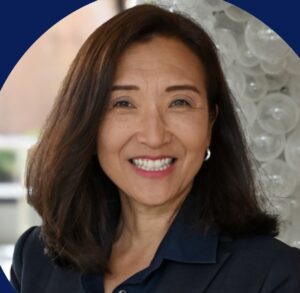
Anna Schoenbaum
It’s no secret that healthcare has a workforce problem. By 2030, the global healthcare worker shortage is expected to reach 10 million, which could lead to $1.1 trillion in costs (McKinsey). And that’s just on the clinical side.
According to a Security Magazine survey, 47 percent ranked IT staff shortages as a top-three challenge. Around two-thirds said routine IT tasks take longer to complete due to limited staff, and 74 percent cited IT staffing shortages as a deployment barrier.
For leaders, this isn’t exactly news. Neither is the fact that as adoption of digital technologies continues to climb, the demand for skilled IT professionals will only grow. And that means organizations need a solid strategy not just for recruiting and retaining talent, but also for helping existing employees transition to IT-based roles.
That’s where Schoenbaum comes in. As both a faculty member at the University of Maryland School of Nursing and a visiting professor at Chamberlain University, she has a great deal of experience mentoring both students and staff, and offered these bits of wisdom for those looking to break into IT.
This advice, however, isn’t just for those who are seeking a new role, or those who are early in their careers. Particularly the piece about networking. “You learn so much when you’re surrounded by colleagues and industry experts,” she noted. Being at events like HIMSS helps to shed light on common problems and provide forums for discussion and learning. “It’s connecting people to share experiences and say, ‘can we implement the same solution at our organization? If not, why?’ Or ‘what do we need to put into place to make it successful?’”
And for leaders, the objective is to take that knowledge – and that spirit of collaboration – back to the organization to help push forward key initiatives. “Technology is evolving very quickly,” she said. “We have to keep in mind that at the end of the day, technology doesn’t transform healthcare. People do. My job is to equip, empower, and elevate those people who can help drive change.”
When that happens, Schoenbaum concluded, “We’re all successful.”